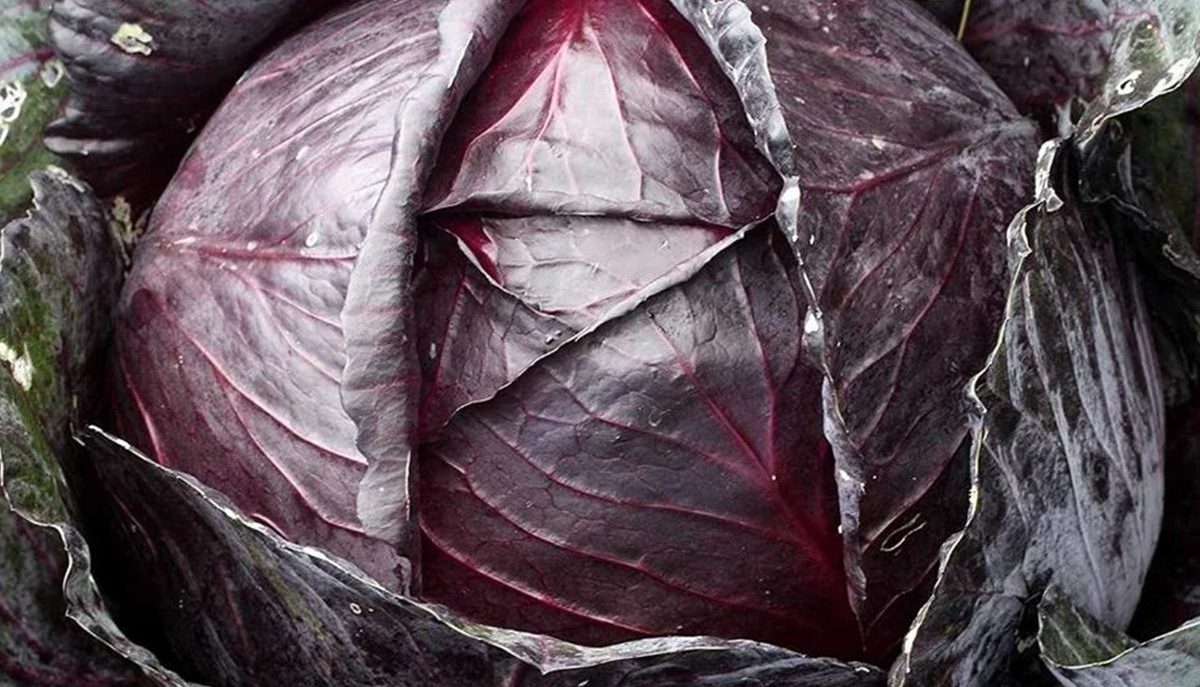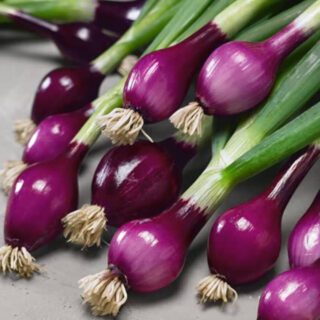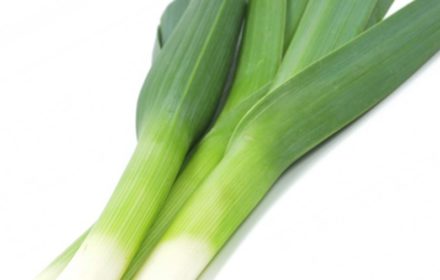How to Grow Large Red Ball Cabbage from Seeds
Large Red Ball Cabbage, also known as Red Acre Cabbage or Blaukraut, is a reliable and productive variety that thrives in UK gardens. This hardy cabbage variety produces compact, firm heads with vibrant red, crispy leaves, perfect for adding colour and flavour to salads or as a side garnish. Red cabbage heads typically grow to a diameter of 15-18 cm (6-7 inches) and can be harvested around 80 days after sowing. Follow this guide to successfully sow and grow Large Red Ball Cabbage seeds in your garden, allotment, or greenhouse.
When and Where to Sow Large Red Ball Cabbage Seeds
- Indoor or Greenhouse Sowing: Start seeds indoors or in a greenhouse from late winter to early spring (February to April) when temperatures can be controlled. Germination requires a minimum temperature of 15°C (59°F). Sowing indoors helps extend the growing season and gives plants a head start.
- Outdoor Sowing: For direct outdoor sowing, plant seeds from late spring to summer (May to July), once the soil has warmed up. Red cabbage is hardy to the UK climate and can be grown successfully in garden beds, allotments, or containers.
Ideal Growing Conditions for Large Red Ball Cabbage Plants
- Soil Requirements: Cabbages thrive in well-drained, fertile soil enriched with plenty of organic matter. Before sowing, incorporate compost or well-rotted manure to improve soil fertility and structure. Red cabbage prefers a slightly alkaline pH (6.5-7.5). If the soil is too acidic, apply garden lime to adjust the pH.
- Sunlight: Choose a sunny or partially shaded location that receives at least 6 hours of sunlight a day. Full sun encourages strong growth and larger cabbage heads, but partial shade can help prevent bolting in hot weather.
- Temperature: Cabbage is a cool-weather crop that grows best in temperatures between 10-20°C (50-68°F). It is frost-tolerant and can withstand cooler nights, making it ideal for the UK growing season.
How to Sow Large Red Ball Cabbage Seeds Indoors
- Sowing in Pots or Trays: Fill seed trays or small pots with a high-quality, fine-grade seed compost. Sow the seeds at a depth of about 3 mm (1/8 inch) and lightly cover them with compost. Firm gently and water well.
- Germination Conditions: Place the trays in a warm, bright location, such as a greenhouse or windowsill, where temperatures are maintained at 15-18°C (59-65°F). Keep the compost moist but not waterlogged. Germination typically occurs within 7-14 days.
- Transplanting Seedlings: When seedlings have developed 2-3 true leaves and are large enough to handle, transplant them into individual pots to grow on. Harden off the seedlings by gradually introducing them to outdoor conditions over a week before planting them outdoors.
How to Sow Large Red Ball Cabbage Seeds Outdoors
- Preparing the Soil: Select a sunny, well-drained site and prepare the soil by removing weeds and incorporating compost or well-rotted manure. Ensure the soil is well-drained and has been worked to a fine tilth.
- Sowing Depth and Spacing: Sow seeds directly into the ground at a depth of about 3 mm (1/8 inch). Space seeds 45 cm (18 inches) apart in rows spaced 45 cm (18 inches) apart. This spacing allows the cabbage heads to develop fully without crowding.
- Watering: Water gently after sowing to settle the soil. Keep the soil consistently moist during the germination period, but avoid overwatering, as this can cause the seeds to rot.
- Thinning: Once the seedlings have emerged and are large enough to handle, thin them to their final spacing of 45 cm (18 inches). Thinned seedlings can be transplanted to another part of the garden or used in salads.
Caring for Large Red Ball Cabbage Plants
- Watering: Cabbage plants need consistent moisture, especially during dry periods. Water at the base of the plants to avoid wetting the leaves, which can lead to fungal diseases. Keep the soil moist but not waterlogged.
- Feeding: Apply a balanced, general-purpose fertiliser once a month to support healthy growth. Alternatively, feed with a nitrogen-rich fertiliser in the early stages to promote leafy growth, followed by a potassium-rich feed as the heads begin to form.
- Mulching: Mulch around the base of the plants with straw or organic matter to help retain soil moisture, suppress weeds, and regulate soil temperature. This is particularly beneficial during warm weather.
- Crop Rotation: Avoid planting cabbages in the same location as last season’s brassica crops (e.g., broccoli, kale, cauliflower) to reduce the risk of soil-borne diseases. Rotate crops each year to maintain soil health.
Harvesting and Storing Large Red Ball Cabbage
- Harvesting Time: Large Red Ball Cabbage is typically ready to harvest around 80 days after sowing. Harvest when the heads are firm and fully formed, but before they start splitting due to over-maturity.
- How to Harvest: Use a sharp knife to cut the cabbage head from the base of the plant, leaving some outer leaves attached to protect the head during storage.
- Storage: Red cabbage can be stored in a cool, dry place for several weeks. Alternatively, it can be kept in the fridge for up to 3 months if tightly wrapped in plastic to prevent drying out.
Using Large Red Ball Cabbage in the Kitchen
- Raw: The crisp, sweet leaves of red cabbage are perfect for use in salads, slaws, and sandwiches. Their bright colour adds a pop of visual appeal to dishes.
- Cooked: Red cabbage is delicious when braised or sautéed. It can also be added to stews, soups, and casseroles for a burst of flavour and texture.
- Fermented: Red cabbage is an excellent vegetable for fermentation. Use it to make homemade sauerkraut or pickled cabbage for a healthy, tangy addition to meals.
Common Issues and Tips for Growing Large Red Ball Cabbage
- Pest Control: Cabbages are susceptible to common pests such as cabbage white butterflies, aphids, and slugs. Use netting to protect young plants from butterflies, and apply organic pest control methods to manage infestations.
- Fungal Diseases: Avoid overcrowding and provide good air circulation to prevent fungal diseases like clubroot and powdery mildew. Water at the base of the plants and avoid getting the leaves wet.
- Splitting Heads: To prevent heads from splitting, harvest the cabbage promptly when it is fully grown. Watering inconsistently can also lead to splitting, so keep the soil evenly moist throughout the growing season.
Common Questions About Growing Large Red Ball Cabbage
- Can Large Red Ball Cabbage be grown in containers? Yes, this variety can be grown in large containers. Choose a pot that is at least 30 cm (12 inches) deep and wide to accommodate the root system and provide sufficient space for the cabbage head to form.
- What can I plant with cabbage to improve growth? Cabbage grows well with companion plants such as carrots, onions, and beans. Avoid planting cabbage near tomatoes or strawberries, as they can compete for nutrients.
- How can I prevent my cabbage from bolting? Bolting occurs when the plant flowers prematurely due to stress, usually from hot weather or inconsistent watering. To prevent this, sow seeds in cooler weather and keep the soil consistently moist.
By following these steps, you can enjoy a successful harvest of Large Red Ball Cabbage in your UK garden. Whether used fresh in salads or cooked in hearty dishes, this versatile vegetable is a rewarding addition to any homegrown vegetable plot.



















